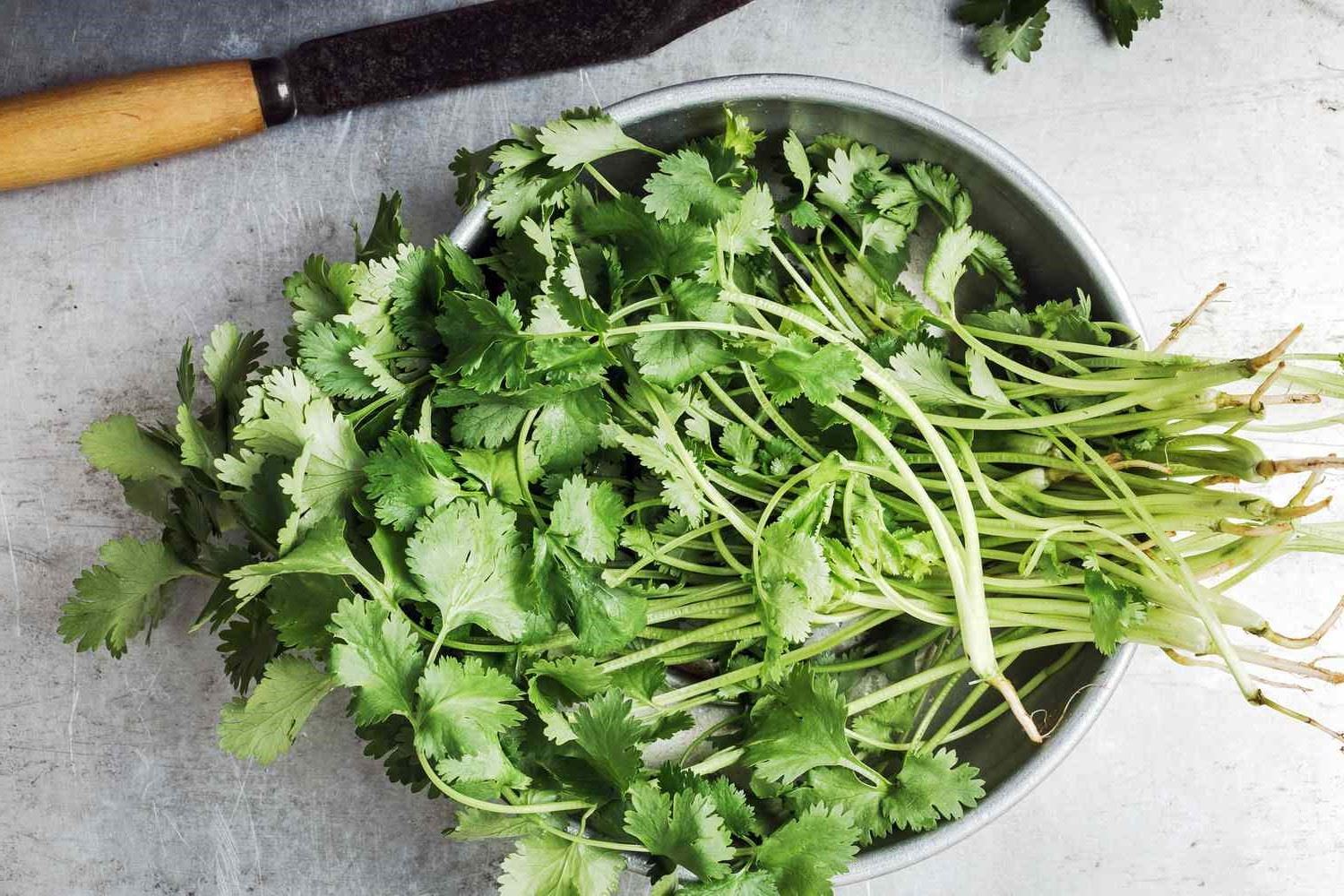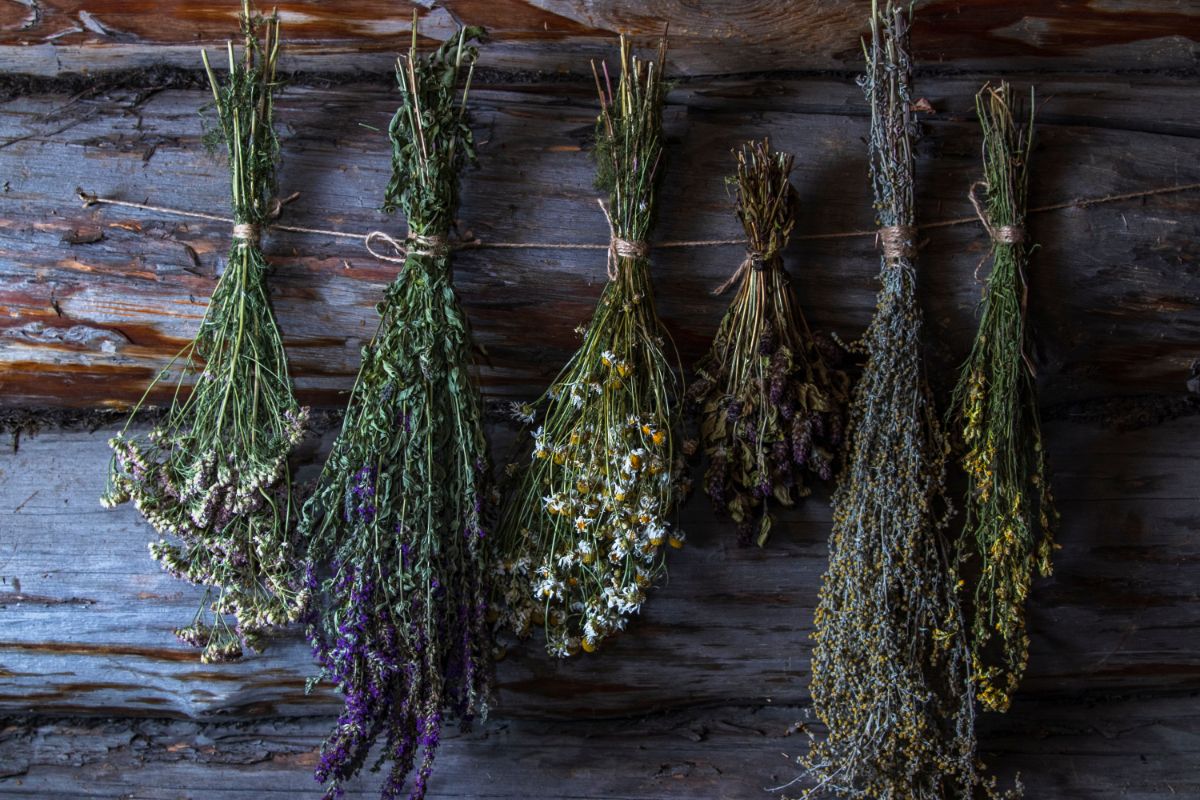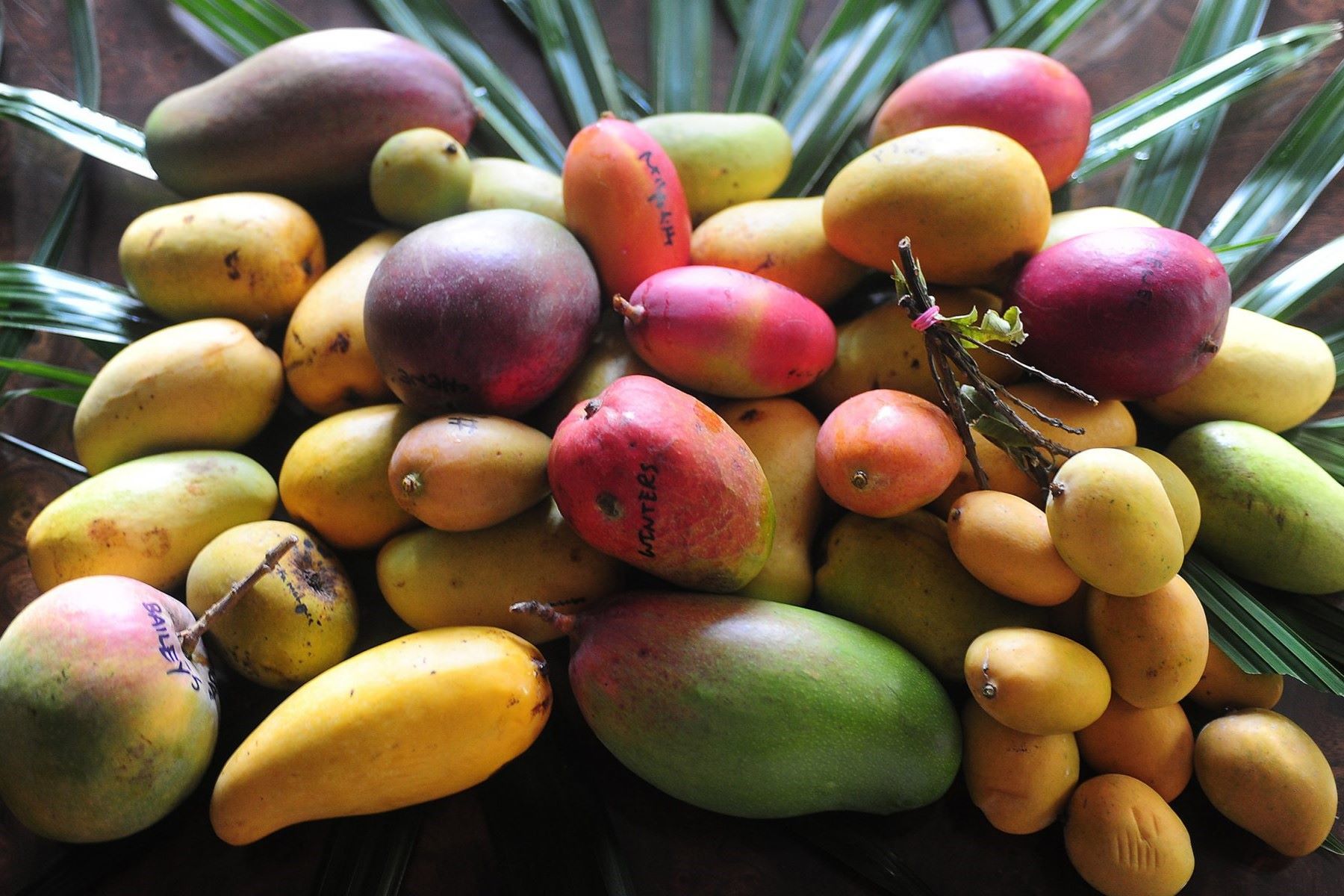Home>Food and Cooking>How To Keep Cilantro Fresh: A Guide To Preserving The Flavor And Texture


Food and Cooking
How To Keep Cilantro Fresh: A Guide To Preserving The Flavor And Texture
Published: March 2, 2024
Learn how to keep cilantro fresh with our comprehensive guide. Discover the best methods for preserving its flavor and texture. Perfect for food and cooking enthusiasts!
(Many of the links in this article redirect to a specific reviewed product. Your purchase of these products through affiliate links helps to generate commission for Noodls.com, at no extra cost. Learn more)
Table of Contents
Introduction
Cilantro, also known as coriander or Chinese parsley, is a versatile herb that adds a burst of fresh flavor to a wide range of dishes. Whether you're preparing zesty salsas, aromatic curries, or vibrant salads, cilantro's distinctive taste and aroma can elevate your culinary creations to new heights. However, one common challenge that many home cooks face is keeping cilantro fresh for an extended period. The delicate leaves of cilantro tend to wilt and lose their flavor quickly, leading to disappointment when the herb is no longer at its best.
In this comprehensive guide, we will delve into the art of preserving cilantro's flavor and texture, ensuring that you can enjoy its vibrant essence for as long as possible. From understanding the unique characteristics of cilantro to exploring various storage techniques and preservation methods, this guide will equip you with the knowledge and skills to extend the shelf life of cilantro without compromising its quality. Whether you're a seasoned chef or a novice in the kitchen, mastering the art of keeping cilantro fresh will empower you to infuse your dishes with the irresistible essence of this beloved herb.
Join us on a journey through the world of cilantro preservation as we uncover the secrets to maintaining its crispness, color, and flavor. By the end of this guide, you'll be equipped with practical tips and techniques that will transform the way you store and use cilantro, ensuring that every meal bursts with the invigorating essence of this cherished herb. Let's embark on this flavorful adventure and unlock the potential of cilantro preservation, allowing you to savor its delightful presence in your culinary endeavors.
Read more: How To Chop Cilantro
Understanding Cilantro
Cilantro, scientifically known as Coriandrum sativum, is a herb that belongs to the Apiaceae family, which also includes parsley, carrots, and celery. It is widely recognized for its vibrant green leaves and delicate, citrusy flavor. The herb is a staple in various cuisines, including Mexican, Indian, Thai, and Middle Eastern, where it is used to add a refreshing and aromatic touch to dishes.
Cilantro leaves are characterized by their flat, lacy appearance and are often mistaken for parsley due to their similar appearance. However, cilantro can be distinguished by its distinct fragrance and flavor, which is often described as a combination of citrus and earthy notes. The herb's flavor profile adds a unique dimension to dishes, offering a refreshing and zesty contrast to savory and spicy flavors.
In addition to its culinary uses, cilantro is also valued for its potential health benefits. It is a good source of vitamins A and K, as well as antioxidants that may help promote overall health. Cilantro is also believed to have natural cleansing properties and is used in traditional medicine for its potential detoxifying effects.
When it comes to selecting cilantro for culinary use, it's essential to choose fresh, vibrant bunches with crisp, unwilted leaves. The leaves should be a rich green color, free from yellowing or browning, and the stems should be firm and fragrant. Opting for organic cilantro, when available, can ensure that you're getting a high-quality herb free from pesticides and other contaminants.
Understanding the unique characteristics of cilantro is crucial for preserving its flavor and texture. The delicate nature of the herb requires specific storage and preservation techniques to maintain its freshness. By gaining insight into the distinct qualities of cilantro, you'll be better equipped to appreciate and harness the full potential of this beloved herb in your culinary endeavors.
Proper Storage Techniques
Proper storage is essential for maintaining the freshness and flavor of cilantro. The delicate nature of this herb requires specific techniques to ensure that it remains vibrant and crisp for as long as possible. Here are some effective storage techniques to preserve the quality of cilantro:
-
Water Storage: Place the cilantro stems in a glass of water, similar to how you would store fresh flowers. Cover the leaves loosely with a plastic bag and secure it with a rubber band. This method helps keep the herb hydrated and prolongs its shelf life.
-
Refrigerator Storage: If you prefer not to use water, you can store cilantro in the refrigerator. First, gently rinse the cilantro to remove any dirt or debris, then pat it dry with a paper towel. Wrap the cilantro in a slightly damp paper towel and place it in a resealable plastic bag. Make sure to squeeze out any excess air before sealing the bag. Store the bag in the refrigerator's crisper drawer, where the herb can stay cool and retain its moisture.
-
Herb Keeper: Consider investing in a specialized herb keeper, which is designed to maintain the ideal environment for storing herbs. These containers provide ventilation and keep the herbs hydrated, extending their freshness.
-
Avoiding Moisture: It's crucial to prevent excess moisture from accumulating on the cilantro, as this can lead to spoilage. Ensure that the herb is not stored in a damp or humid environment, as this can cause the leaves to wilt and become slimy.
By employing these proper storage techniques, you can extend the shelf life of cilantro and ensure that it remains vibrant and flavorful. Understanding the best practices for storing cilantro is key to maximizing its culinary potential and infusing your dishes with its invigorating essence.
Freezing Cilantro
Freezing cilantro is a convenient method for preserving this herb for future use, especially when you have an abundant supply or want to ensure its availability beyond its typical shelf life. While freezing may cause the leaves to lose some of their fresh texture, the flavor can be retained remarkably well, making it a practical option for extending the usability of cilantro.
To freeze cilantro, start by washing the leaves thoroughly to remove any dirt or impurities. Once cleaned, gently pat the leaves dry with a paper towel to remove excess moisture. Next, you have the option to freeze the leaves whole or chop them into smaller pieces, depending on your preference and intended use.
If freezing the leaves whole, carefully place them in a resealable plastic bag, ensuring that the bag is sealed tightly to prevent air from entering. For chopped cilantro, you can portion the leaves into ice cube trays, filling each compartment with the desired amount. Then, cover the trays with plastic wrap and place them in the freezer until the cilantro is frozen solid.
When freezing cilantro, it's important to label the storage containers with the date to keep track of its freshness. Properly stored, frozen cilantro can maintain its flavor for several months, allowing you to enjoy the essence of this herb even when it's not in season.
When it comes to using frozen cilantro, keep in mind that the texture may change after thawing. While the leaves may become slightly wilted, their flavor remains intact, making them suitable for use in cooked dishes such as soups, stews, and sauces. Frozen cilantro can also be added directly to dishes without the need for thawing, making it a convenient and versatile option for enhancing the flavor of various recipes.
By freezing cilantro, you can ensure that this vibrant herb is readily available whenever inspiration strikes in the kitchen. Whether you're preparing a batch of homemade salsa or adding a burst of freshness to a savory curry, having frozen cilantro on hand allows you to infuse your culinary creations with the invigorating essence of this beloved herb.
Drying Cilantro
Drying cilantro is a traditional method of preserving this herb that allows you to enjoy its flavor and aroma long after the growing season has ended. While drying alters the texture of cilantro, it concentrates the herb's flavor, making it a versatile addition to a wide range of dishes. Whether you have an abundant harvest of cilantro from your garden or want to ensure a sustainable supply throughout the year, drying offers a practical solution for extending the shelf life of this beloved herb.
To dry cilantro, start by gently washing the leaves to remove any dirt or debris. Once cleaned, pat the leaves dry with a paper towel to remove excess moisture. Next, you have several options for drying the cilantro:
-
Air Drying: This method involves tying the cilantro stems into small bundles and hanging them upside down in a well-ventilated area. Choose a location away from direct sunlight, as prolonged exposure to sunlight can cause the leaves to lose their vibrant color and essential oils. As the cilantro dries, it's important to monitor the process and ensure that the herb is kept in a dry environment to prevent mold or mildew.
-
Oven Drying: If you prefer a quicker drying method, you can use an oven to dry cilantro. Start by spreading the clean leaves on a baking sheet in a single layer. Set the oven to its lowest temperature, typically around 180°F (82°C), and place the baking sheet inside. Keep the oven door slightly ajar to allow moisture to escape. Check the cilantro regularly to prevent over-drying, as this can cause the leaves to lose their flavor.
-
Dehydrator: Using a food dehydrator offers a controlled and efficient way to dry cilantro. Arrange the clean leaves on the dehydrator trays, ensuring that there is ample space between the leaves for air circulation. Set the dehydrator to a low temperature, typically around 95°F (35°C) to 115°F (46°C), and allow the cilantro to dry for several hours. The dehydrator's gentle heat helps preserve the herb's essential oils and flavor.
Once the cilantro is completely dry, the leaves should crumble easily between your fingers. At this stage, you can remove the leaves from the stems and store them in airtight containers, away from light and moisture. Properly dried cilantro can retain its flavor for several months, allowing you to savor its essence in various culinary creations.
When using dried cilantro in recipes, keep in mind that its flavor is more concentrated than fresh cilantro. As a result, you may need to adjust the quantity to suit your taste preferences. Dried cilantro is particularly well-suited for long-cooking dishes such as soups, stews, and marinades, where it can infuse the dish with its robust flavor over time.
By mastering the art of drying cilantro, you can ensure that this vibrant herb remains a staple in your kitchen, adding depth and complexity to your favorite dishes throughout the year. Whether you're exploring new recipes or revisiting timeless classics, dried cilantro offers a convenient and flavorful way to elevate your culinary creations.
Read more: How To Preserve Curls Overnight
Using Cilantro Preservatives
In addition to freezing and drying, another effective method for preserving cilantro is through the use of cilantro preservatives. These preservatives are designed to extend the shelf life of the herb while retaining its vibrant color and fresh flavor. By harnessing the power of preservatives, you can ensure that your supply of cilantro remains readily available for culinary endeavors, even beyond its typical lifespan.
One popular cilantro preservation method involves creating a flavorful cilantro paste or puree. This involves blending fresh cilantro leaves with a small amount of oil, such as olive oil or vegetable oil, to form a smooth, vibrant paste. The addition of oil helps preserve the color and flavor of the cilantro while preventing it from oxidizing and losing its freshness. Once prepared, the cilantro paste can be stored in airtight containers in the refrigerator, where it can remain viable for an extended period. This versatile cilantro paste can be used as a flavor-packed addition to marinades, dressings, and sauces, infusing dishes with the invigorating essence of fresh cilantro.
Another popular method for preserving cilantro is by creating cilantro-infused oils or vinegars. By steeping fresh cilantro leaves in oil or vinegar, you can capture the herb's essence and create a versatile ingredient for enhancing a wide range of dishes. Cilantro-infused oils can be drizzled over salads, roasted vegetables, or grilled meats, adding a burst of fresh flavor to each dish. Similarly, cilantro-infused vinegars can be used to brighten up dressings, marinades, and pickled vegetables, offering a tangy and aromatic touch to culinary creations.
Additionally, pickling cilantro is a creative way to preserve its flavor and texture while introducing a delightful tanginess to the herb. By immersing cilantro in a brine solution, you can create pickled cilantro that can be used as a zesty garnish or a flavorful addition to sandwiches, tacos, and appetizers. The pickling process not only preserves the cilantro but also infuses it with a unique combination of sweet, sour, and savory flavors, creating a versatile condiment for various dishes.
By utilizing cilantro preservatives, you can expand your culinary repertoire and ensure that the vibrant essence of cilantro remains at your fingertips. Whether you're infusing oils, creating flavorful pastes, or experimenting with pickling, these preservation methods allow you to savor the irresistible flavor of cilantro throughout the year, elevating your culinary creations with its invigorating presence.
Tips for Keeping Cilantro Fresh
-
Trimming and Pruning: Upon bringing cilantro home, trim the stems' ends and remove any discolored or wilted leaves. This process helps revitalize the herb and prolong its freshness.
-
Utilize Paper Towels: When storing cilantro in the refrigerator, wrapping it in a slightly damp paper towel can help maintain the herb's moisture levels, preventing wilting and preserving its vibrant green color.
-
Frequent Inspection: Regularly check stored cilantro for any signs of spoilage, such as slimy or yellowing leaves. Removing any deteriorating leaves promptly can prevent the spread of decay and extend the herb's shelf life.
-
Optimal Temperature: Cilantro thrives in cool temperatures. Ensure that the storage environment, whether in the refrigerator or herb keeper, maintains a consistent cool temperature to prevent premature wilting.
-
Avoiding Ethylene Exposure: Store cilantro away from ethylene-producing fruits such as apples, bananas, and tomatoes. Ethylene can accelerate the herb's aging process, leading to quicker deterioration.
-
Replenishing Water: If storing cilantro in a glass of water, change the water every few days to keep it fresh and prevent bacterial growth. This simple step can significantly prolong the herb's vitality.
-
Strategic Placement: Store cilantro away from strong-smelling foods, as the herb can easily absorb odors. Keeping it in a separate section of the refrigerator or herb keeper can help preserve its natural aroma and flavor.
-
Use Quickly or Preserve: Cilantro is at its peak freshness when used shortly after purchase. If not planning immediate use, consider freezing, drying, or utilizing preservatives to extend its usability and prevent wastage.
By incorporating these practical tips into your cilantro storage routine, you can ensure that this vibrant herb remains fresh, flavorful, and ready to elevate your culinary creations whenever inspiration strikes.
Conclusion
In conclusion, mastering the art of preserving cilantro is a valuable skill that empowers home cooks and culinary enthusiasts to savor the vibrant essence of this beloved herb for an extended period. By understanding the unique characteristics of cilantro and implementing effective storage and preservation techniques, individuals can ensure that their supply of cilantro remains fresh, flavorful, and readily available for a wide range of culinary endeavors.
Throughout this comprehensive guide, we have explored various methods for keeping cilantro fresh, from proper storage techniques to freezing, drying, and utilizing cilantro preservatives. Each approach offers practical and creative solutions for extending the shelf life of cilantro while maintaining its essential flavor and aroma.
Proper storage techniques, such as water storage, refrigerator storage, and the use of specialized herb keepers, provide an effective means of preserving cilantro's freshness. These methods help maintain the herb's moisture levels and prevent premature wilting, ensuring that it remains vibrant and crisp for an extended period.
Freezing cilantro offers a convenient way to preserve the herb for future use, allowing individuals to enjoy its invigorating essence even when it's not in season. Whether added to cooked dishes or used as a flavorful garnish, frozen cilantro retains its distinctive flavor, making it a versatile addition to various recipes.
Drying cilantro presents a traditional method of preservation that concentrates the herb's flavor, offering a convenient supply of cilantro throughout the year. Whether air-dried, oven-dried, or dehydrated, dried cilantro adds depth and complexity to dishes, infusing them with its robust and aromatic essence.
Furthermore, the use of cilantro preservatives, such as flavorful pastes, infused oils, vinegars, and pickled cilantro, expands the possibilities for incorporating this herb into culinary creations. These preservation methods capture the essence of cilantro, allowing individuals to savor its irresistible flavor and aroma in diverse dishes.
By incorporating practical tips for keeping cilantro fresh, individuals can optimize the herb's shelf life and ensure that it remains a staple in their culinary repertoire. From trimming and pruning to strategic storage and frequent inspection, these tips contribute to maintaining cilantro's vitality and flavor.
In essence, the journey through the world of cilantro preservation has equipped readers with the knowledge and skills to elevate their culinary creations with the invigorating essence of this cherished herb. By embracing the art of preserving cilantro, individuals can infuse their dishes with the vibrant and refreshing flavor that only fresh cilantro can provide, transforming each culinary endeavor into a delightful and aromatic experience.














